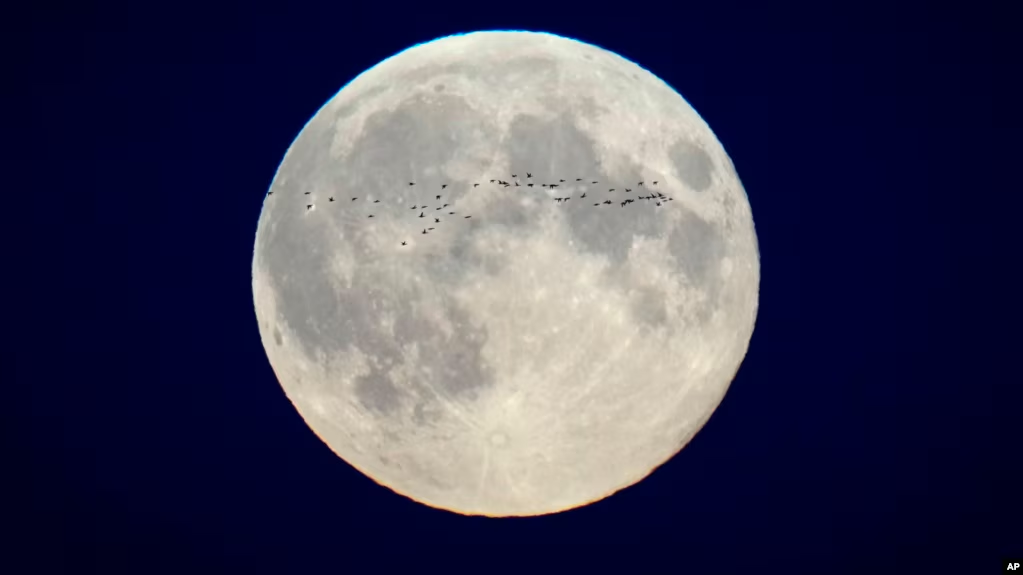A Short History of Spacecraft Landings on the Moon
A Short History of Spacecraft Landings on the Moon
今回は、月面への着陸に挑んできた国々の記録を振り返る記事です。1966年にソ連の探査機が月に着陸して以来、アメリカ、中国、インド、日本などが無人・有人を問わず数々の試みを行ってきました。文中の句動詞「touch down」は飛行機や宇宙船が着地するときに使われ、「We touched down safely.(無事に着陸しました)」や「The spacecraft touched down on the Moon(探査機が月に着陸した)」のように表現されます。今も続く月探査の動き、あなたはそれにどんな価値があると思いますか?講師と話してみましょう。

1.Article
Directions: Read the following article aloud.
Many years have passed since the first spacecraft landed on the moon in 1966. From then until now, there have been many additional attempts with some succeeding and others failing. Here is a short history of some of these attempts.
The American space agency NASA says Luna 9 was the first spacecraft to carry out a soft landing on the moon. It was also the first to send “photographic data” from the moon’s surface to Earth. Luna 9’s landing proved “the lunar surface could support the weight of a lander and that an object would not sink into a loose layer of dust as some models predicted,” NASA said.
In May 1966, the United States followed with its Surveyor 1 mission. NASA describes this effort as “the first of a series of seven robotic spacecraft sent to the moon to gather data in preparation for NASA's Apollo missions.” The successful soft landing of Surveyor 1 “was one of the great successes of NASA's early lunar and interplanetary program.”
Both the U.S. and Soviet Union had other successful robotic landings. Next, the countries aimed to be the first to land humans on the moon.
In 2020, China successfully returned samples of rock and dirt collected by the rovers. The mission returned about 1.7 kilograms of lunar material collected from the near side of the moon. Then in 2024, another mission returned rock and soil samples from the less explored far side of the moon. China has said it aims to land its astronauts on the moon by 2030.
First victories
The Soviet Union’s Luna 9 spacecraft was the first to land on the moon. It touched down on the lunar surface in 1966. The landing came after several other Soviet spacecraft either did not reach the moon or crashed on the surface.The American space agency NASA says Luna 9 was the first spacecraft to carry out a soft landing on the moon. It was also the first to send “photographic data” from the moon’s surface to Earth. Luna 9’s landing proved “the lunar surface could support the weight of a lander and that an object would not sink into a loose layer of dust as some models predicted,” NASA said.
In May 1966, the United States followed with its Surveyor 1 mission. NASA describes this effort as “the first of a series of seven robotic spacecraft sent to the moon to gather data in preparation for NASA's Apollo missions.” The successful soft landing of Surveyor 1 “was one of the great successes of NASA's early lunar and interplanetary program.”
Both the U.S. and Soviet Union had other successful robotic landings. Next, the countries aimed to be the first to land humans on the moon.
Apollo program
In 1969, NASA successfully landed Apollo 11 astronauts Neil Armstrong and Buzz Aldrin on the moon. The U.S. Apollo program sent 12 astronauts to explore the moon over six missions. Apollo 17 was the last in 1972. The U.S. is still the only country to land humans on the moon. NASA officials say the agency’s Artemis program aims to return astronauts to the lunar surface possibly by the end of 2026.China expands space efforts
In 2013, China became the third country to successfully land a spacecraft on the moon. China landed an exploring vehicle, or rover named Yutu that year. China followed with the Yutu-2 rover in 2019, this time touching down on the moon’s unexplored far side.In 2020, China successfully returned samples of rock and dirt collected by the rovers. The mission returned about 1.7 kilograms of lunar material collected from the near side of the moon. Then in 2024, another mission returned rock and soil samples from the less explored far side of the moon. China has said it aims to land its astronauts on the moon by 2030.
Russian landing failure
In 2023, Russia tried its first moon landing in nearly 50 years. The Luna 25 spacecraft was attempting to land near the lunar south pole. But it is believed to have crash landed on the moon’s surface. The country’s last effort before that, Luna 24 in 1976, landed successfully and returned moon rocks to Earth.India succeeds on second attempt
After its first lander crashed into the moon in 2019, India made its second attempt in 2023. The country successfully landed its Chandrayaan-3 spacecraft on the lunar surface. The mission made India the fourth nation to complete a moon landing.Japan lands sideways
In January 2024, Japan became the fifth country to successfully land a spacecraft on the moon. But the SLIM spacecraft landed upside down. This caused some power and communication problems, but the lander was able to operate for a short time.The Associated Press reported this story. Bryan Lynn adapted the report for VOA Learning English with additional information from NASA.
Source:A Short History of Spacecraft Landings on the Moon
VOA
本教材は、the U.S. Agency for Global Mediaより許諾を得て、産経ヒューマンラーニング株式会社が編集しています。
テキストの無断転載・無断使用を固く禁じます 。
